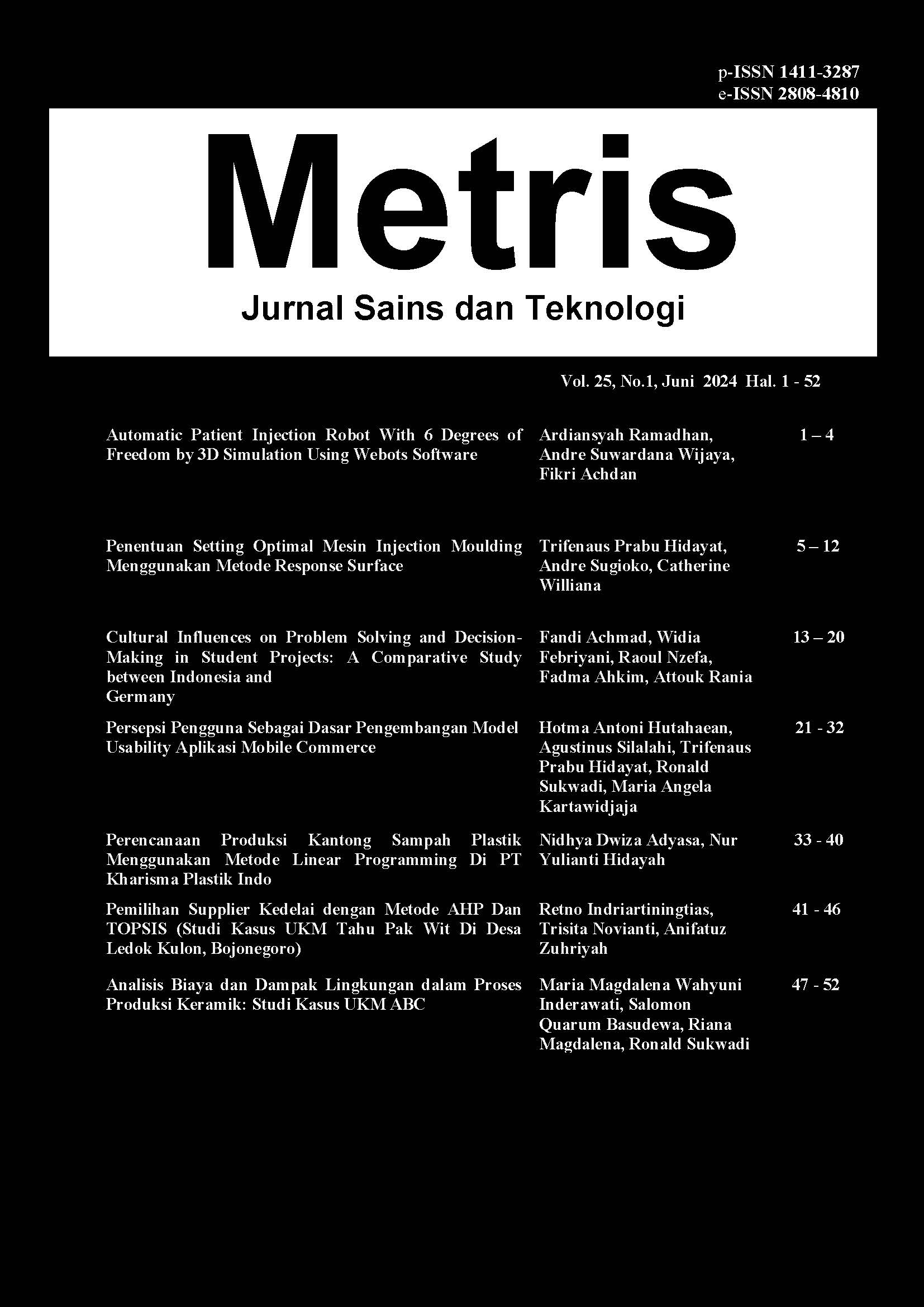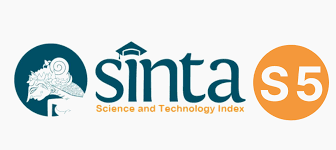Analisis Biaya dan Dampak Lingkungan dalam Proses Produksi Keramik: Studi Kasus UKM ABC
DOI:
https://doi.org/10.25170/metris.v25i01.5612Keywords:
AHP Methods, Ceramic Manufacturing, Consumer Satisfaction, Green Quality Function Deployment, Waste RecyclingAbstract
ABC Ceramic Factory conducted the process of producing ceramic floor tiles, distributing them to ceramic shops, and then selling them to consumers. Several processes or stages, from manufacturing to distribution, still leave abandoned waste. This research aims to determine what costs in making ceramics at the ABC Ceramic Factory can be reduced to save on company costs. The methods used are Green Quality Function Deployment and AHP Methods. Based on the data processing results, the ceramic manufacturing process is efficient, and the ceramic color is long-lasting because it has the expected satisfaction values of 0.661 and 0.538. Then, recycling waste is the highest technical response, with a value of 0.24. At the same time, the production process is the stage that produces
the most waste, with a value of 0.29, and raw material costs are the costs that can be reduced the most, with the highest value of 4+2-. Therefore, the ABC Ceramic Factory must improve from the manufacturing process to the final
product.
References
Administrator. 2022. Realisasi Investasi di Industri Keramik Capai Rp 17,7 Triliun di Semester I-2022 [Online]. Jakarta: Kementerian Perindustrian RI. Available: https://www.bbk.go.id/berita/brt6359f868637ab[Diakses tanggal 1 Mei 2024].
Alting, L., Wenzel, H. & Hauschild, M. Environmental Design of Industrial Products (EDIP), anchoring of the life cycle concept in industry and society. 6th International Seminar on Life Cycle Engineering, 1999 Canada. Queen's University, Kingston, Ontario, 370-379.
Chen, Y., Ren, S. & Ma, Y. 2024. The impact of eco-preneurship and green technology on greenhouse gas emissions - An analysis of East Asian economies. Heliyon, 10, e29083. https://doi.org/10.1016/j.heliyon.2024.e29083
Fu, C., Liu, Y.-Q. & Shan, M. 2023. Drivers of low-carbon practices in green supply chain management in construction industry: An empirical study in China. Journal of Cleaner Production, 428, 139497.https://doi.org/10.1016/j.jclepro.2023.139497
Pakpahan, A. K. 2012. Developing the Plered's Ceramic Cluster, West Java by Encouraging Building the Model House and Introducing Kampoeng Keramik. Procedia Economics and Finance, 4: 44-53. 10.1016/S2212-5671(12)00319-X
UU-RI/32 2009. Undang-undang Republik Indonesia Nomor 32 Tahun 2009 Tentang Perlindungan dan Pengelolaan Lingkungan Hidup. Jakarta: Sekretariat Negara Republik Indonesia.
Wibowo, A., Kusumawati, N. A., Athira, Y. M., Ananda, P. & Antoni, H. 2023. Analisis Dampak Kawasan Industri Terhadap Lingkungan Masyarakat di Kecamatan Gunungputri. Pemuliaan Hukum, 5: 119-128. https://doi.org/10.30999/jph.v5i2.2637
Wu, Y.-H. & Ho, C. C. 2015. Integration of green quality function deployment and fuzzy theory: a case study on green mobile phone design. Journal of Cleaner Production, 108: 271-280. https://doi.org/10.1016/j.jclepro.2015.09.013
Wulandari, R. E. & Bulan, S. J. 2019. Penerapan Analytical Herachy Process (AHP) dalam Perangkingan Bengkel Mobil Terbaik di Kota Kupang. Jurnal Teknologi Terpadu, 5: 13-17.
Xu, Y., Xian, B., Ren, Y., Wang, Y., Lang, L. & Wang, B. 2024. Do carbon labels increase Chinese consumers’ willingness to pay for carbon-labeled agricultural products? Journal of Cleaner Production, 434: 140299. https://doi.org/10.1016/j.jclepro.2023.140299












